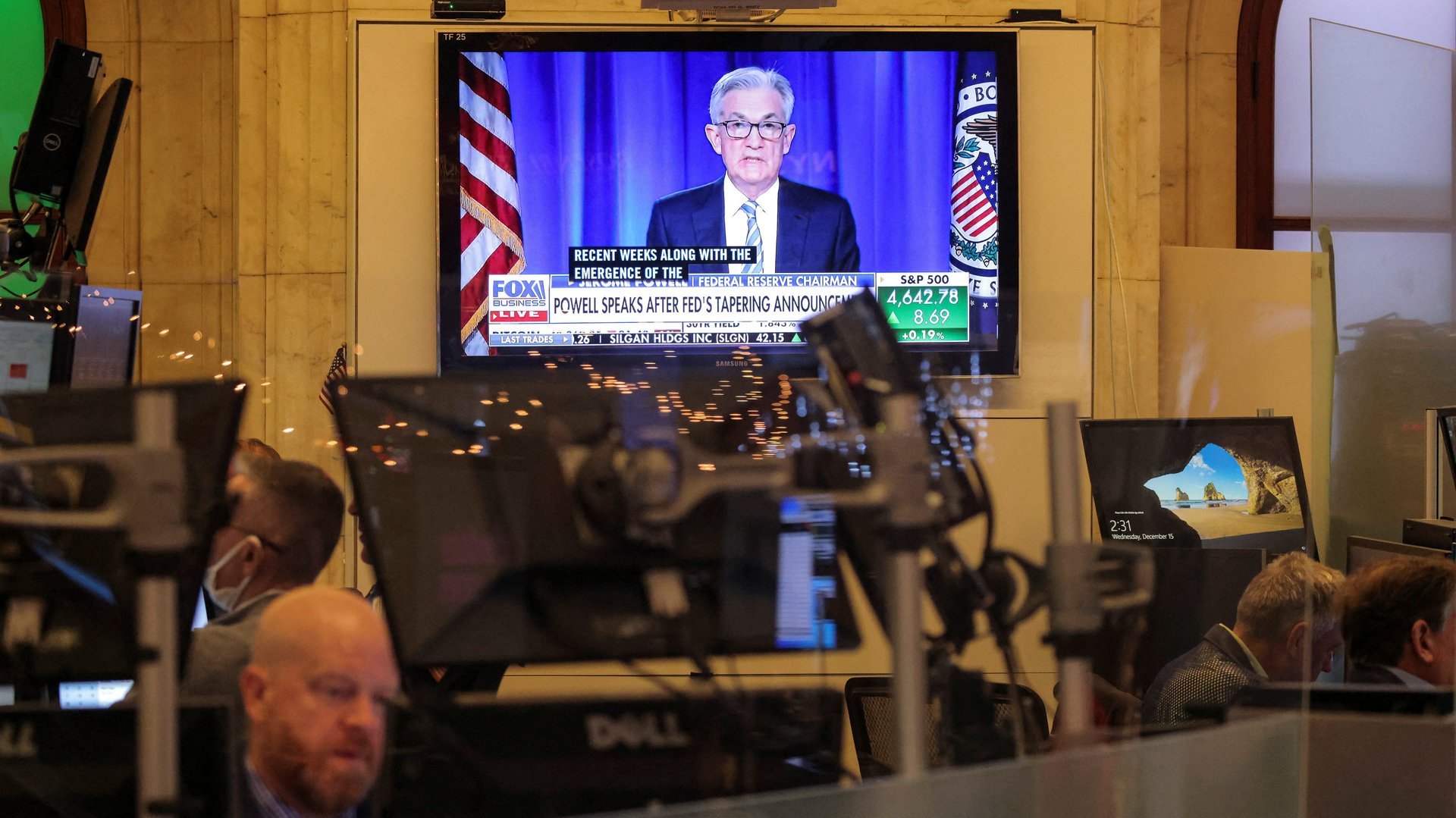How Jay Powell sees inflation evolving in 2022
Jerome Powell still believes US inflation will wind down as supply chains get untangled next year—but now he also sees a growing risk of high prices lingering for much longer.


Jerome Powell still believes US inflation will wind down as supply chains get untangled next year—but now he also sees a growing risk of high prices lingering for much longer.
On Dec. 15, the US Federal Reserve said it is speeding up the phaseout of its bond buying program, and signaled it could hike interest rates as early as next spring. “There’s a real risk now,” Powell said at a press conference to explain the decision. “I believe that inflation may be more persistent…the risk of higher inflation becoming entrenched has increased.”
Powell tempered his comments by adding he doesn’t believe that risk is high at the moment. Still, he also made it clear the Fed has now shifted from standby to full gear up mode.
What did the Fed say today?
The central bank will now be cutting back its bond purchases by $30 billion a month, instead of $15 billion. Because the Fed doesn’t want to raise rates while it’s still buying bonds, ending the program earlier should give it the ability to get ahead of inflation before it becomes more worrisome. Powell has said the Fed wouldn’t raise interest rates until the tapering was over, and at this pace, it will be complete by mid-March. On Wednesday, he said the central bank would likely hike rates soon after.
Powell’s inflation outlook
Powell said the decision to accelerate tapering was triggered by a spate of October indicators, including a surge in the cost of wages and benefits for employees, half a million new jobs, and a 0.9% monthly increase in consumer prices.
As inflation heats up, the tradeoff between higher prices and the labor market recovery is becoming less clear for the Fed. On Wednesday, Powell suggested the Federal Open Markets Committee might raise rates even if the labor force participation rate continues to stagnate. ”I certainly would not in any way want to foreclose the idea that the labor market can get even better,” Powell said. “But with inflation as high as it is, we have to make policy in real time.”
The Fed chief said he is particularly focused on wages, and whether they are growing faster than productivity. “That puts upward pressure on firms, and they raise prices,” Powell said. However, he underscored that there are no signs of that happening so far. “This inflation has really nothing to do with tightness in the labor market,” he added. “What’s coming out now is really strong growth, really strong demand, high incomes.”
“People will judge in 25 years whether we overdid it or not,” he said. “The reality is that we are where we are, and we think our policy is the right one for the situation that we’re in.”